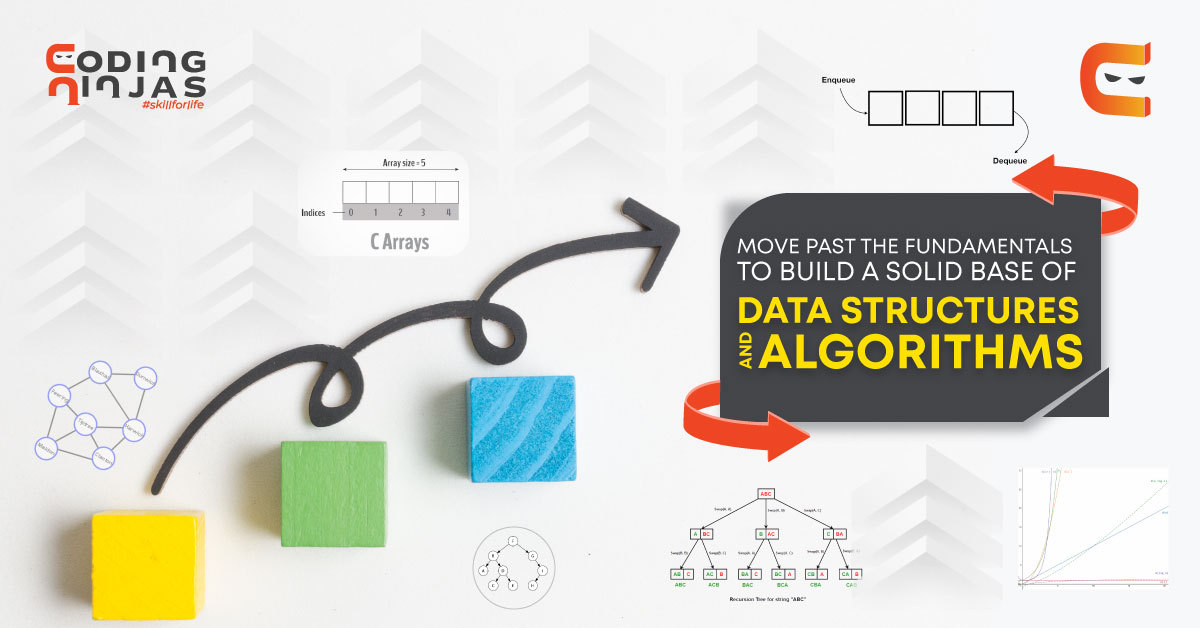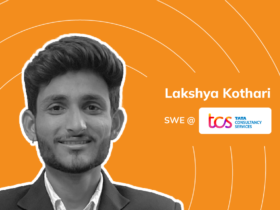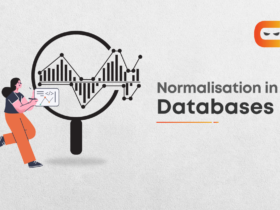Table of Contents
Introduction
Data Structures and algorithms are essential to have a seamless programming journey in order to understand the nuances of different programming languages.
A lot of beginners and experienced programmers avoid learning Data Structures and Algorithms because it’s complicated and they think that there is no use of all the above stuff in real life. It is a way of collecting and organizing data in such a way that we can perform operations on these data in an effective way It is about rendering data elements in terms of some relationship, for better organization and storage.
An algorithm is a finite set of instructions or logic, written in order, to accomplish a certain predefined task. The algorithm is not the complete code or program, it is just the core logic(solution) of a problem, which can be expressed either as an informal high-level description as pseudocode or using a flowchart
Data structures and algorithms play a key role in the implementation from designing software to hiring in an organization. Significant data structures like Hash Tables, Trees, Tries, Graphs alongside algorithms leads a candidate further in solving problems efficiently and if you appear for any job interview the interviewer would be interested in knowing your application of DS and Algorithms to solve a particular problem.
Now you must be wondering that despite studying Data Structures and Algorithms your command over them isn’t promising enough.
Now you must be wondering that despite of studying about Data Structures and Algorithms your command over them isn’t promising enough.
Methods and prerequisites to improve Data Structures & Algorithm skills:
- Prior knowledge of programming language/s
- Basic knowledge of Data Structures and Algorithms
- Identifying the purpose of learning
- Availability of resources
Step 1: Understanding Depth vs. Breadth
Depth First Search (DFS) traversing method uses the stack for storing the visited vertices. DFS is the edge based method and works in the recursive fashion where the vertices are explored along a path (edge). The exploration of a node is suspended as soon as another unexplored node is found and the deepest unexplored nodes are traversed at foremost. DFS traverse/visit each vertex exactly once and each edge is inspected exactly twice.
Breadth First Search (BFS) is the traversing method used in graphs. It uses a queue for storing the visited vertices. In this method the emphasize is on the vertices of the graph, one vertex is selected at first then it is visited and marked. The vertices adjacent to the visited vertex are then visited and stored in the queue sequentially.
BFS and DFS, both of the graph searching techniques have similar running time but different space consumption, DFS takes linear space because we have to remember single path with unexplored nodes, while BFS keeps every node in memory.
- Swift coding
- Code with correct syntax
- Writing clean codes
- Applying same code to a new problem
- Implementing the right data structures whenever necessary
- Make a list of core questions
- Enlisting 100 core problems
Step 2: Theory
As much as you value the practical knowledge, theoretical understanding can offer some traditional level of understanding to master the concepts for which you should be using these books
- Elements of Programming Interviews by Amit Prakash
- Cracking the Coding Interview by Gayle Laakmann McDowell
Step 3: Mastering data structures:
- Arrays and Lists
- 2D Arrays
- Strings
- Linked List
- Stack
- Queue
- Hash Table & Hash Set
- Heap
- Graphs
- Binary Tree
- Binary Search Tree
- Trie
Step 4: Spaced Repetition
Spaced repetition is a method of reviewing material at systematic intervals. … Spaced repetition is in many ways the opposite of “cramming”. Rather than learning information in a short time period, which can lead to quick forgetting, spaced repetition focuses on long-term retention of new information.
Step 5: Isolate Techniques
At the basis of the Isolation Forest algorithm there is the tendency of anomalous instances in a dataset to be easier to separate from the rest of the sample (isolate), compared to normal points. In order to isolate a data point the algorithm recursively generates partitions on the sample by randomly selecting an attribute and then randomly selecting a split value for the attribute, between the minimum and maximum values allowed for that attribute.
- Depth First Search
- Recursion + Memoisation
- Hash Table + Linked List combination
- Searching a Binary Tree etc
Step 6: Practice on Whiteboard
Whiteboards are important because they help you memorize and solve your equations in order to understand your data structures and algorithms, the methodology, and identify your overall process of learning.
Few benefits of whiteboards include:
- Improves learning
- Allows for effective annotation of documents
- Improves efficiency
- Boost productivity
- Enhances comprehensive understanding
The primary reason for companies to focus more on algorithms is because they want to screen the candidate’s ability to think uniquely and accordingly compose algorithms with the combination of data structures to solve it that can save the company thousands of dollars. Companies like Youtube, Facebook, Twitter, Instagram, Google Maps had the highest number of users in the world requires more optimization due to which these product-based companies only hire candidates who can optimize their software as per user demand.
Frequently Asked Questions
Practice makes a man perfect and revising and practicing makes a developer better at algorithms.
To learn data structures and algorithms and actually get good at it, you need to spend at least 6 months on it.
To learn data structures and algorithms, you need to first understand the basic concepts with the help of a mentor-led course or online resources such as videos, blogs and articles. After you are confident with your concepts, move on to practice on platforms like Leetcode.
If you prefer a mentor-led course, check out the course on data structures and algorithms by Coding Ninjas. If you are a self-learner and explorer, open courseware by MIT and Stanford are great options.
To be good at algorithms you can either take up a data structures and algorithms course where you can learn data structures and algorithms or you can do it on your own by understanding the basics and what goes inside an algorithm along with the complexity analysis.
It takes around 15 days to learn the data structures nicely and another 15 days to learn algorithms. After that you can keep practicing until you feel comfortable.
You can either take up a data structures and algorithms course or learn on your own using the CLRS book.
Basic programming fundamentals are necessary to learn before data structures and algorithms.
Yes, python is great for learning data structures. Basically, it doesn’t matter which language you are learning data structures in, the underlying concepts remain the same everywhere.
You should start from arrays, linked lists, stacks, queues and heaps and then move on to more complex data structures and algorithms.
Conclusion
You will learn pattern recognition, algorithms, data structures, and C++. An in-depth understanding of these concepts will help you learn new languages and identify, diagnose and fix problems. Computational thinking uses logical reasoning and analysis to understand problems and formulate solutions in a format that a computer can understand.
If you have not made a choice yet, do it now!















Leave a Reply